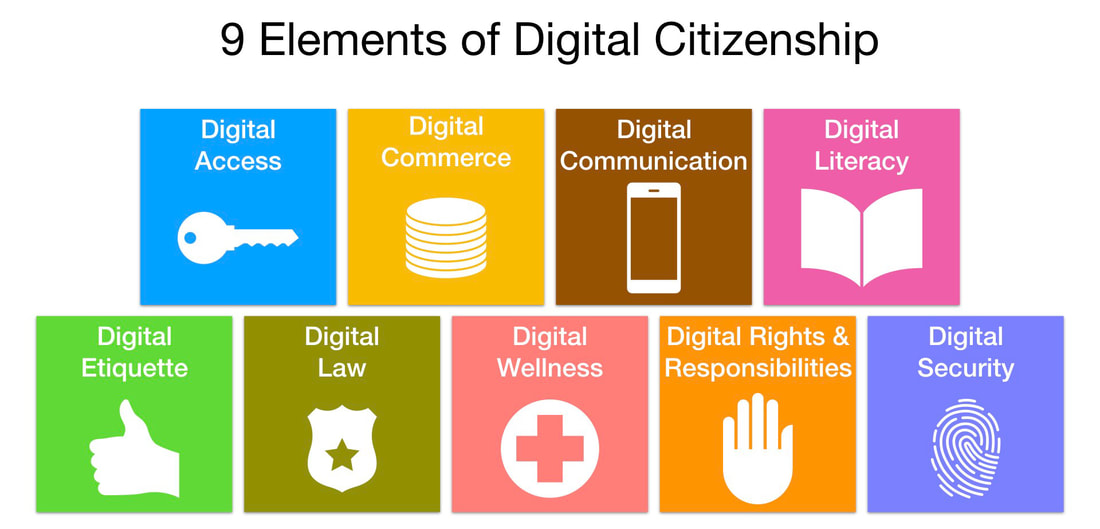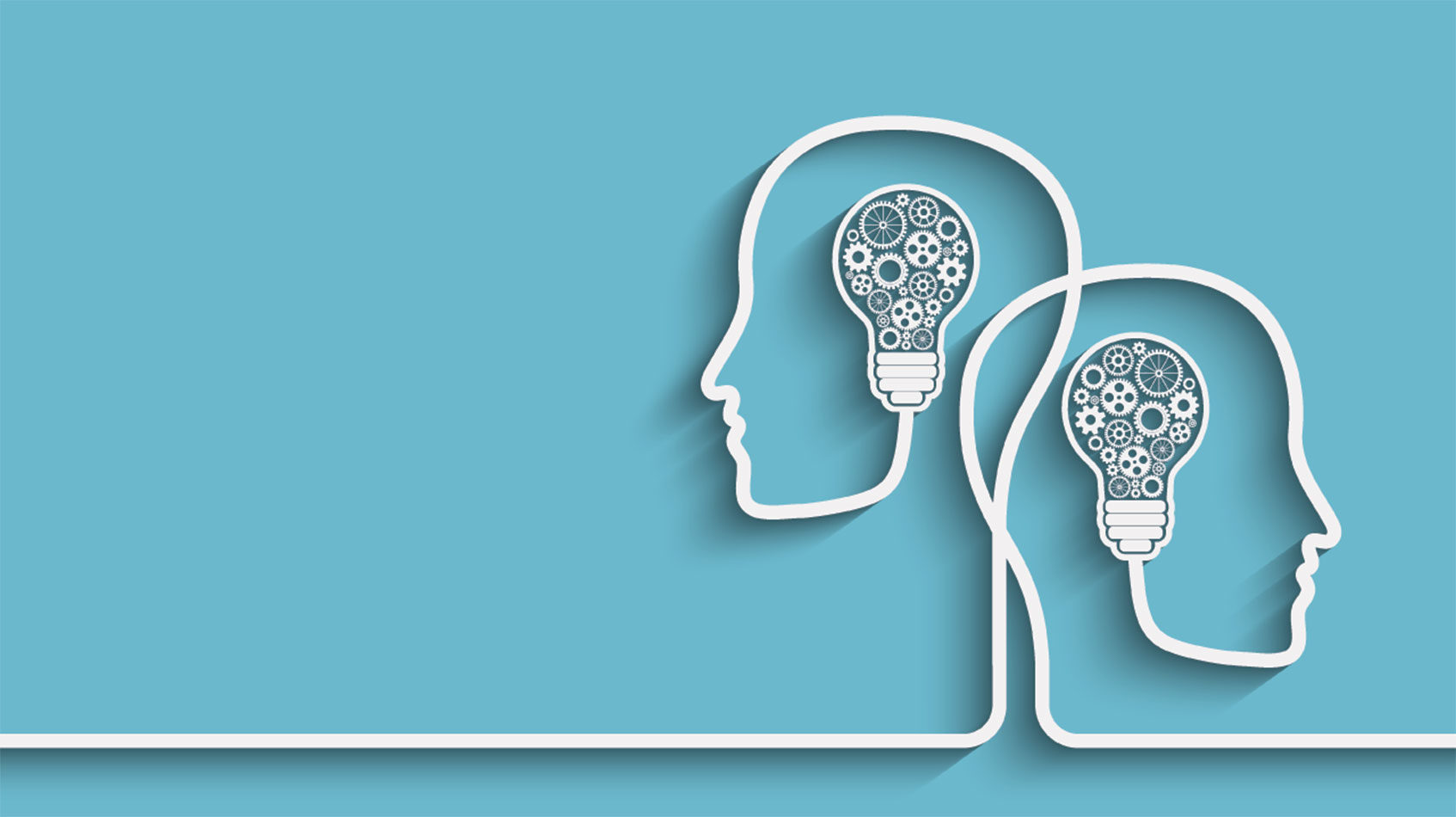This week in Digital Citizenship, I was introduced to digital citizenship and its purpose in today’s increasingly digital world. During this week, we focused on three topics: what is digital citizenship, is citizenship and digital citizenship similar or different, and the introduction to the nine elements of digital citizenship. To fully understand how the issues of digital technology relate to the concept of digital citizenship, I first had to learn what is digital citizenship.
what is digital citizenship?
According to Ribble (2015), digital citizenship is reinforcing the positive aspects of technology so that everyone can work and play in the digital, virtual world. He supports the idea of digital citizenship because he believes that digital technology should be accessible and used for the benefit of all. To date, however, there have been few guidelines on the acceptable use of technology. Authors Polgar and Curran (2015) describe digital citizenship as the norms of appropriate, responsible technology use, but they admit that term itself is very board and requires some level of background. Ohler (2012) says that digital citizen is essentially the digital version for character education but for the digital age. That is, individuals using technology while feeling a sense of community and responsibility. People should not be forced to plug in or plug out, essentially living two separate lives. Instead, the article argues that a one life perspective will help students learn about being digital citizenship and the responsibility it entails. Heick (2013) states that digital citizenship is like citizenship and adds that it is the quality of habits, actions, and consumption patterns that impact the ecology of digital content and communities. From my understanding, I would define digital citizenship as the responsible use of technology while engaging in the digital world.
This then led to the next point, is digital citizenship different or the same a citizenship. I am still on the fence about this, but I will say that there is a bit of distinction. I define citizenship as the country you are born or naturalized in. As a part of this community, it entails specific legal rights and duties plus special privileges that only citizens of that country or community can take part of. In return, citizens are expected to obey their country’s laws or risk losing these rights and privileges (“Definitions of citizenship,” n.d.). On the other hand, digital citizenship refers specifically to the digital, virtual word (Ribble, 2015). Unlike countries that follow specific rules, the digital world ascends all physical and geographic boundaries. The rules here are far less defined and should be the goal of schools to prep students to navigate a borderless world and learn how to work and communicate with people from around the world. As digital citizens, it should be our responsibility to create an environment where all users can work, play, and explore without interference or obstruction (Ribble, 2015).
nine elements of digital citizenship
Lastly, this week I was introduced to the nine elements of digital citizenship, including the categories and principles. The nine elements of digital citizenship is a flexible framework that was developed to help our understanding of the current and future technology issues in schools (Ribble, 2015). Since students are already using technology, whether in or outside the classroom, it is important that educators provide them the necessary tools and resources for them to technology appropriately.
The first element is digital access. Digital access is defined as the full electronic participation in society (Ribble, 2015). One of the benefits of technology is it provides opportunities for anyone with access to explore and communicate almost immediately. Educators should assess their use of technology at their schools to determine if all students have adequate access to devices and high-speed internet.
Element two is about digital commerce. It is the electronic buying and selling of goods (Ribble, 2015). Some students purchase items online without realize the potential consequences, such as debt accumulation or stolen data. Educators should help students understand that their actions can potentially follow them for the rest of their lives (Ribble, 2015).
Digital communication is the third element, and it refers to the electronic exchange of information (Ribble, 2015). Users, including students, need to be aware of what they say, post, or share when using emails or other online communication methods.
Element four is digital literacy, the process of teaching and learning about technology and the use of technology (Ribble, 2015). Understanding how technology works is an important aspect of technology. It is the responsibility of the school’s technology specialists to help identify tools for the classroom and alternative ways to engage students.
The fifth element is digital etiquette. This is defined as the electronic standards of conduct or procedure (Ribble, 2015). Students typical see others around them use technology and believe that they can behave that way as well. Good digital citizens should evaluate their own use of technology and those around them and make necessary adjustments.
Digital law, the sixth element, is the electronic responsibility for actions and deed (Ribble, 2015).
Element seventh is the digital rights and responsibilities. It is the requirements and freedoms extended to everyone in a digital world (Ribble, 2015). Educators need to provide structure for technology use, so students can be given a clear understanding of appropriate behavior that is expected of them as a member of the digital society.
Element eight is about digital health and wellness. It is important that educators should make learn and model digital safety in their classrooms.
The ninth element, digital security, is the electronic precautions to guarantee safety (Ribble, 2015). People should double check where they store their data in the cloud, and make sure their devices are secured with a passcode or lock.
importance of digital citizenship
As I prepare for our cumulating project during week 5, this week’s readings and videos have helped me to gain a better understanding of the importance of digital citizenship and the emerging issues of digital technology. To prepare our students for digital citizenship will require a lot of effort from educators to raise their understanding of digital citizenship and how they can fully partake it in. With a better understanding of what digital citizenship is and the nine elements, I can now start looking at how to implement digital citizenship at my school and district.
References
Bbrandino68. (2010, December 15). The nine elements of digital citizenship. [Video]. YouTube. http://www.youtube.com/watch?v=87JiUrWaQVk
Heick, T. (2013). The definition of digital citizenship. https://www.teachthought.com/the-future-of-learning/the-definition-of-digital-citzenship/
Ohler, J. (2012). Digital citizenship means character education for the digital age. Education Digest: Essential Readings Condensed for Quick Review, 77(8), 14-17. [PDF: Ohler_Digital_citizenship_means_character_education_2012.pdf]
Polgar, D. R., & Curran, M. B.F.X. (2015). We shouldn’t assume people know what digital citizenship is. http://www.teachthought.com/technology/we-shouldnt-assume-people-know-what-digital-citizenship-is/
Ribble, M. (2015). Digital citizenship in schools: Nine elements all students should know. (3rd ed.). Eugene, OR: International Society for Technology.





Be the first to reply